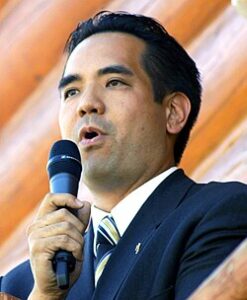The Final Tangible Property Regulations issued by the IRS greatly impact the treatment of costs that relate to building repairs, routine maintenance, retired or removed assets, and building improvements. These new regulations provide cash flow friendly practices that can help increase write-offs and reduce tax liability, but are also necessary to understand when applying for these deductions in order to avoid IRS audit and penalties. ETS works to identify building systems, compare costs to those systems, and identify eligible write-offs under the new repair definitions. Additional tax strategies including a cost segregation study increasing depreciation and ensuring the best return on investment for your property.
Frequently Asked Questions on the Final Tangible Property Regs:
Is a change of 3115 accounting method required for a current year disposition?
No, a 3115 is only required for a look back/late disposition or partial disposition.

If the window repair costs more than $200, can it still be written off as a repair if it doesn't improve the building?
Yes, if they file the De Minimis Safe Harbor, then they would be on the $500 or $5,000 limitation and could still write that off.
What would you do with tiles that are used in bathrooms if each tile costs under $2 but you need several boxes to redo a bathroom?
You would first need to find out how it is currently being depreciated, is it on a 39 year or is it in 5 year? How old is the existing bathroom tiles and what was the total cost of that? What is the total number of bathrooms in the building? Those facts would then be applied to certain circumstances to determine if that would be considered as a repair.
Does the $1 million rule include the original basis allocated to the land under the safe harbor for small taxpayers?
No, it does not include the land. It is the unadjusted basis of the building and the building itself must have a basis less than one million dollars.
Does the small taxpayer safe harbor require an accounting method change?
This is an annual election and there is no change of accounting method. You must just file the election moving forward for that qualification.
What about renovations of an apartment in a 100 unit building?
Apartment buildings or multi-family housing are one of those properties where we see so many improvement or repair costs on a unit-by-unit basis, as tenants are moving in and out. Most of those costs will be characterized as repair costs or routine maintenance. A lot of it is going to depend on if they have done a cost segregation study and if they are depreciating the assets in there as personal property vs. real property.
For example, we see carpet replacement frequently in apartment buildings. If they have done a cost segregation study, then that will be depreciated as a 5 year asset so then the question is how long has it been in place and how much of it are they replacing. More likely than not, this will be considered a repair cost. As they go in and do repairs on a unit-by-unit basis, those changes will all be be factored under repairs until the property is of certain age and they have fully depreciated a lot of those assets.
We look at the class life of the particular asset impacted by the repair.
How is the partial disposition election made? It seems you just write off the old and capitalize the new.
In the current year, it is not an election and is just a write off. If a cost segregation study has been done and the basis for the item removed is known, then you can document and show the value on that particular asset that has been removed and take the write off. On a look back basis it is difficult to take the deduction if there is with no cost segregation study in place. Typically, that is where an engineering firm such as Engineered Tax Services would come in and do a disposition study to find what assets were in place before and what assets they can dispose of based on what they replaced it with.
Are the 481a adjustments spread over 4 years or immediate?
It is immediate. We can go back as far as we have documentation making adjustments as they related to mis-capitalized items, writing things off as routine maintenance, changing the depreciable class-lives, and also doing disposition as one large 481a adjustment on the current year. It is often a very significant deduction, reducing their tax liability or wiping it out completely while they continue under NOLs until they have used up all the deductions.
If you wrote off expenses in a prior year that should have been capitalized, do you need to file a 3115 to capitalize?
If you have clients that have been aggressive with writing off costs that are clearly defined in the regs as being capitalized improvements, then yes, they absolutely need to go back and make the reverse adjustment and file a 3115.
For the prior year disposition, does that need a 3115?
Yes, any prior year disposition needs a prior year 3115 with a 481a adjustment.
If you have a question surrounding the Tangible Property Regs, contact Engineered Tax Services for more immediate assistance at 800-236-6519 or email here.
*Please note that this is not all inclusive, nor is it meant to serve as financial or tax advice. Please consult your CPA or ETS director for further direction.




